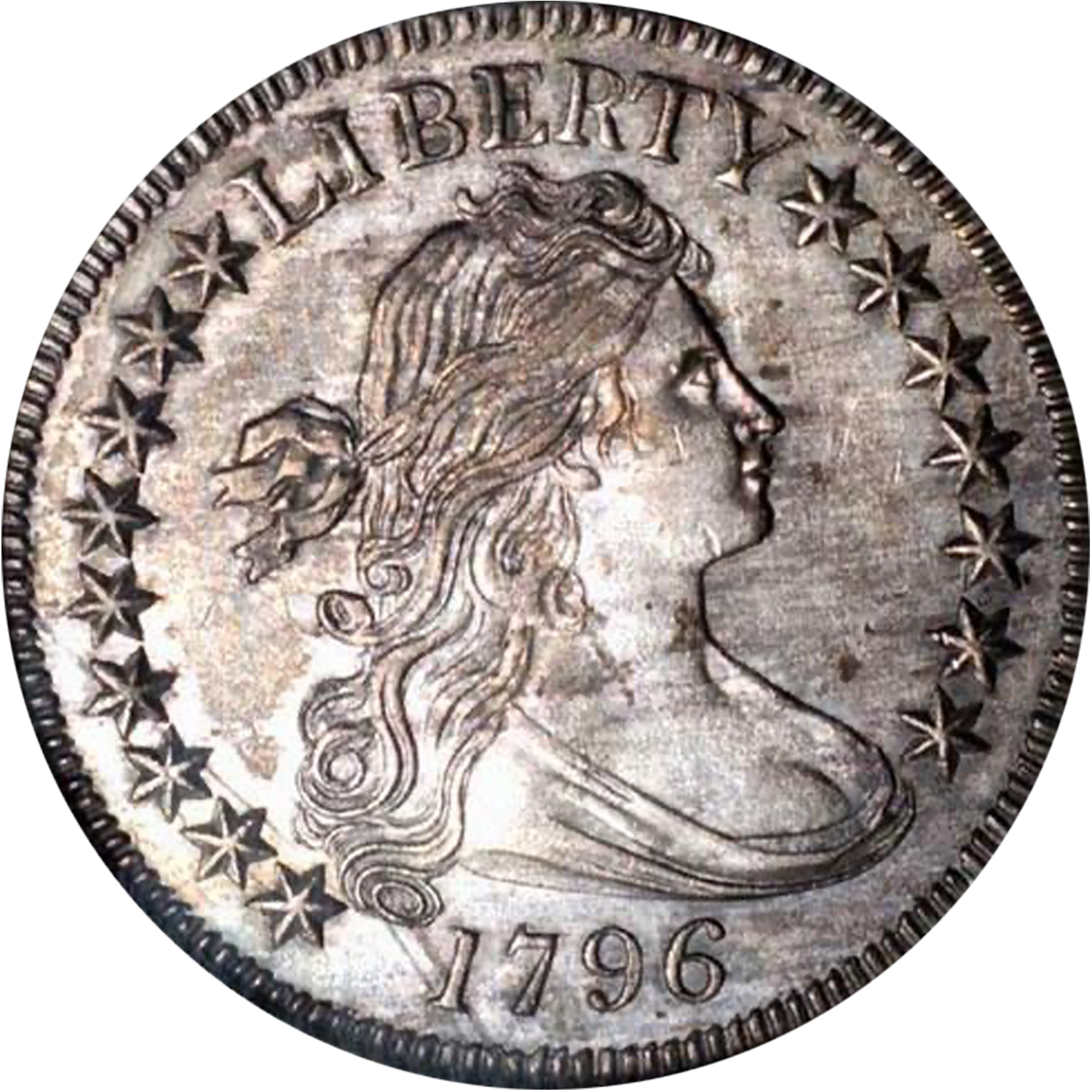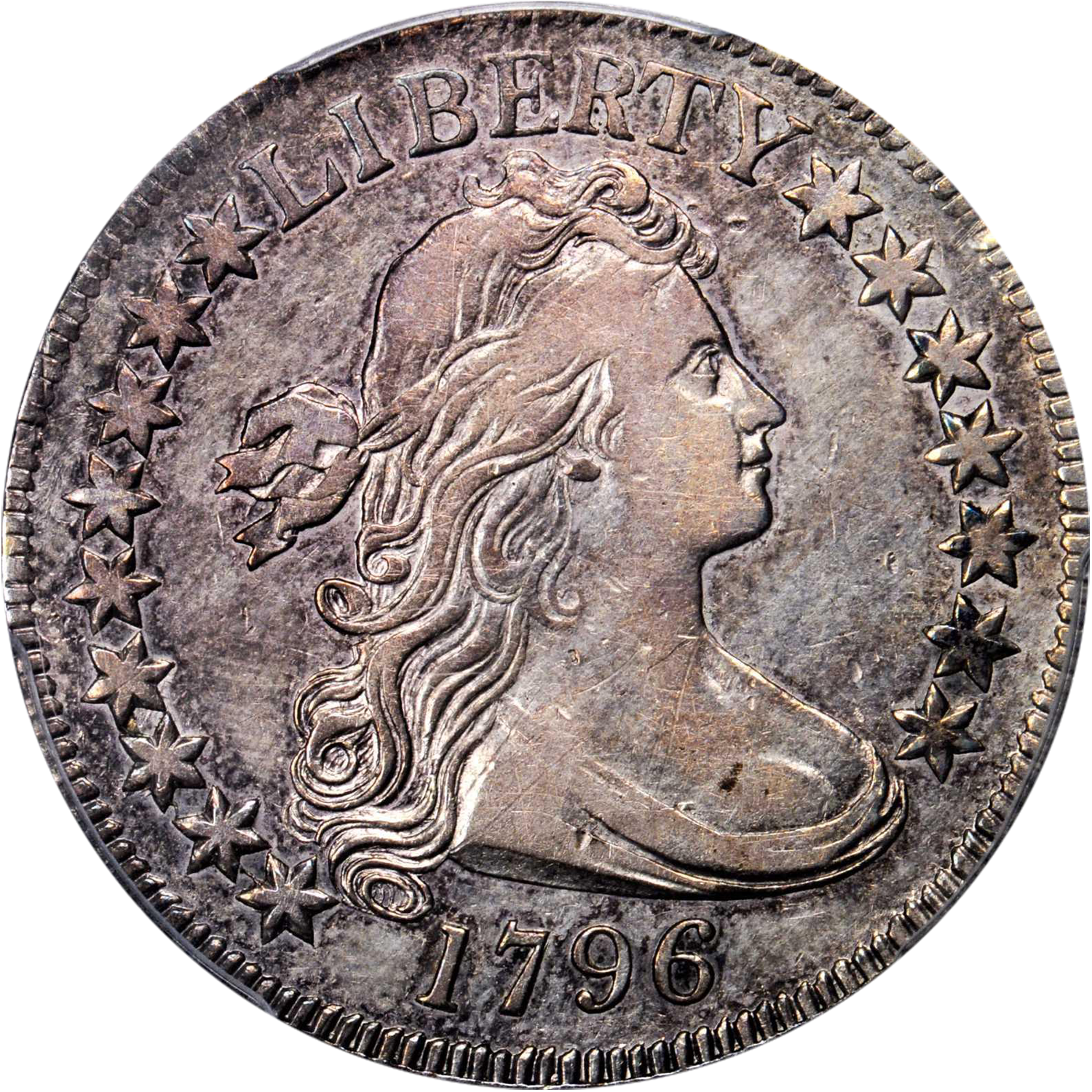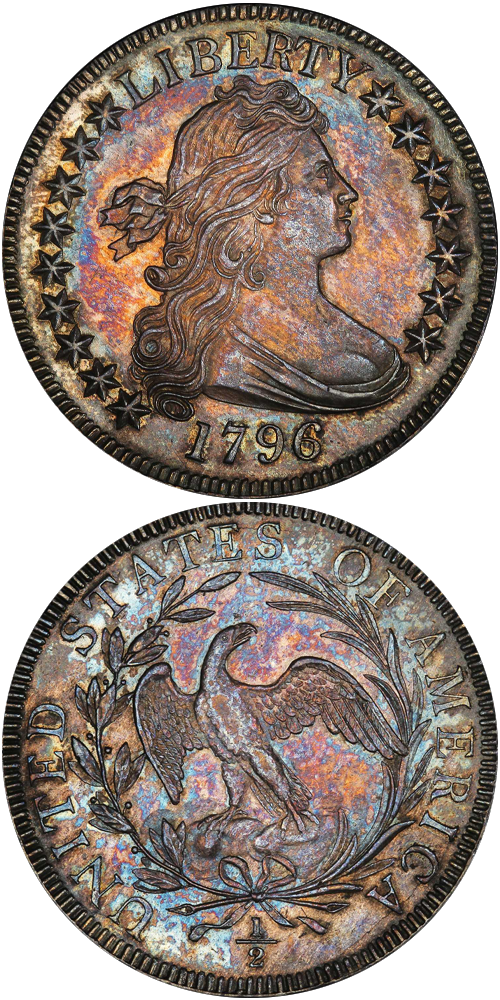1796 Draped Bust Half Dollar
16 Stars
A monument of American expansion, the 1796 16 Star half dollar represents a key moment in our history, when the United States finally had too many states to continue to symbolize each of them with an obverse star. Tennessee joined the Union as the 16th state on June 1, 1796. There would be no 17 Star half dollar, nor any other denomination, upon the admission of whatever state that would be (Ohio, as it turned out, in 1803). A new procedure was not settled upon immediately: half dimes of 1797 would be struck with 16 stars, 15 stars, and 13 stars; the latter became the new standard. Dimes and half eagles of 1797 likewise showed this transition, with dimes made in both 16 star and 13 star varieties, while half eagles were coined with obverses that showed either 15 or 16 stars. Half dollars depicted 15 stars in 1797 before adopting the new 13 star standard when the next half dollars were struck in 1801. That new standard caught on last with the dollar denomination, which used both 15 star and 13 star alignments as late as 1798 before adopting a standard 13 star obverse for all issues thereafter.
Of the two varieties of 1796 half dollar, the 16 Star obverse is considered the rarer one by a significant margin. Just three Mint State 1796 16 Star half dollars have been certified by PCGS, with one each in grades MS-62, MS-64, and MS-66. At the MS-66 grade level, just one other example of this entire design type has been certified.
The example to the left was sold by Stack's Bowers Galleries in the D. Brent Pogue Part I Auction, where it realized $822,500.
1796 16-Stars Draped Bust Half Dollar Auction Highlights
 PCGS MS-66 Sold for $822,500 View Lot 1102 |  NGC MS-64 Sold for $276,000 View Lot 575 |  PCGS VF-35 Sold for $141,000 View Lot 105 |






